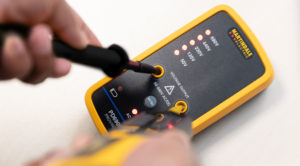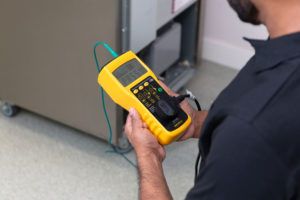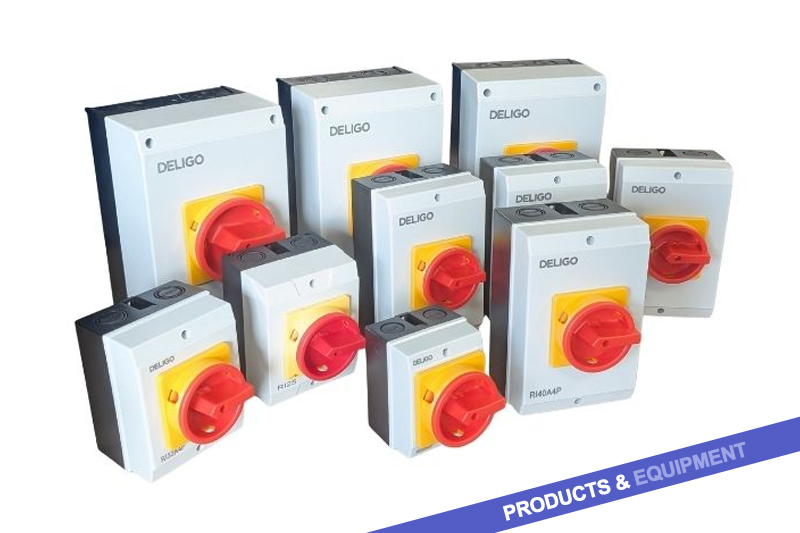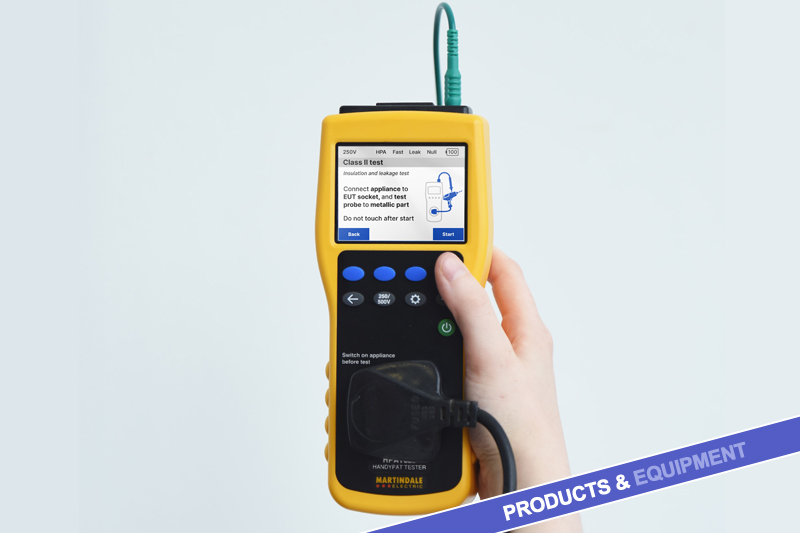Electricians rely on test equipment every day to keep installations safe, compliant and problem-free. Getting to know the key test products and how they are used can help you serve your customer better, says Steve Dunning, Managing Director at Martindale.
Electrical testing isn’t just a regulatory requirement – it’s a vital part of keeping people and structures safe. Whether it’s verifying that a socket is wired correctly or proving a circuit is dead before work begins, the right testing equipment gives electricians confidence on the job.
Top five
When you stock the testing tools that your customers trust, you’re not only supporting safer working practices but building long-term customer loyalty. Here are five of the most in-demand pieces of electrical test equipment.
- Multi-Function Testers (MFTs)
Multi-function testers are indispensable. They can perform a range of tests including continuity tests, insulation resistance tests, earth fault low impedance tests and wiring polarity, among others.
Combining so many tests into one easy-to-use device means less equipment to carry around and fewer cables to connect. As these devices walk the user through each step and flag any issues, they are far less likely to make errors or have to perform tests for a second time. By cutting out the need to swap between different devices, MFTs are also real time savers and can make a significant difference on larger projects or jobs where deadlines are tight.
For wholesalers who want to stock efficient MFTs, the Martindale ET6000 Series covers a wide variety of essential testing tasks, including high-current and non-trip earth loop impedance testing, voltage measurement, phase sequence indication and Auto RCD testing. The ET6300 and ET6500 are also EV ready.

- Voltage Indicators
Voltage indicators (VIs) are critical for verifying the presence or absence of voltage in a circuit, providing a quick visual or auditory indication that helps determine whether it’s safe to proceed with work. VIs should function without a battery. This is because if the battery in the device is flat, a false ‘dead’ reading could be made on a live circuit.
We are often asked why multimeters or non-contact voltage detectors can’t be used instead. The reason a Multimeter is not suitable is because it is too easy to select the wrong range and, as previously highlighted, they use batteries. Non-contact voltage detectors also require a battery and a standard proving unit cannot prove the device is working correctly – a specialist proving device is needed for this.
- Proving Units
Incorporating voltage indicators and voltage testers into your electrical safety strategy makes for a strong and reliable safe isolation procedure. But to truly ensure a circuit is not live, it’s crucial users check their voltage indicator (VI) with a known source, such as a proving unit, both before and after they test the circuit. This double-check confirms the VI is working correctly.
Martindale offers several proving units for a variety of voltage levels – 240V, 440V and 690V – from the entry level PD230SRD to the PD690SRD, which supplies the full test voltage for both high and low impedance voltage indicators, test lamps and meters.

- Portable Appliance Testers (PAT Testers)
PAT testing is an important part of electrical safety in the workplace and for good reason – the Health and Safety Executive (HSE) reports that a quarter of all reportable electrical accidents involve portable appliances. The Electricity at Work Regulations (1989) states employers are required to ensure that any electrical equipment that could cause injury is kept in a safe condition.
A good PAT tester should be light, compact and easily portable as most tests will be performed on site rather than in a workshop. The tester should have a clear pass/fail indication, ideal for quick on-the-go testing, while straightforward menus and inbuilt auto-test sequences are also very useful, especially for those new to PAT testing.
When advising on testers, it’s worth knowing the purpose; someone carrying out occasional tests on low-risk equipment might only need a basic pass/fail tester, while a contractor working across multiple client sites might benefit from a tester with onboard data storage.

- Socket Testers
A socket tester is a first-line indicator to identify potentially unsafe installations and wiring faults. While all socket testers will confirm that fundamental connections like earth, live and neutral are correctly established, those classified as advanced or professional also help verify the quality of the earth. The results from these tests are typically shown through LEDs that light up in different patterns to alert the user to the current state of the socket in terms of presence of voltage. In some models, an audible buzzer might also be used to indicate the status.
There are a wide variety of socket testers on the market to choose from which can make it challenging to select the most appropriate one. Martindale has a wealth of information on its website outlining the different types available and their capabilities. The Electrical Safety First guidance note Best Practice Guide 8 (version 2) “Selection and Use of Plug In Socket Testing Devices” is also an excellent source of information.
Meeting demands
Stocking these five essential pieces of test equipment ensures that your customers have access to the essential tools required for electrical safety and compliance. By offering reliable, user-friendly products from reputable manufacturers, you can meet the demands of professionals in the field and support safe electrical practices across various industries.
For additional information, click here
Find more industry feature articles here





